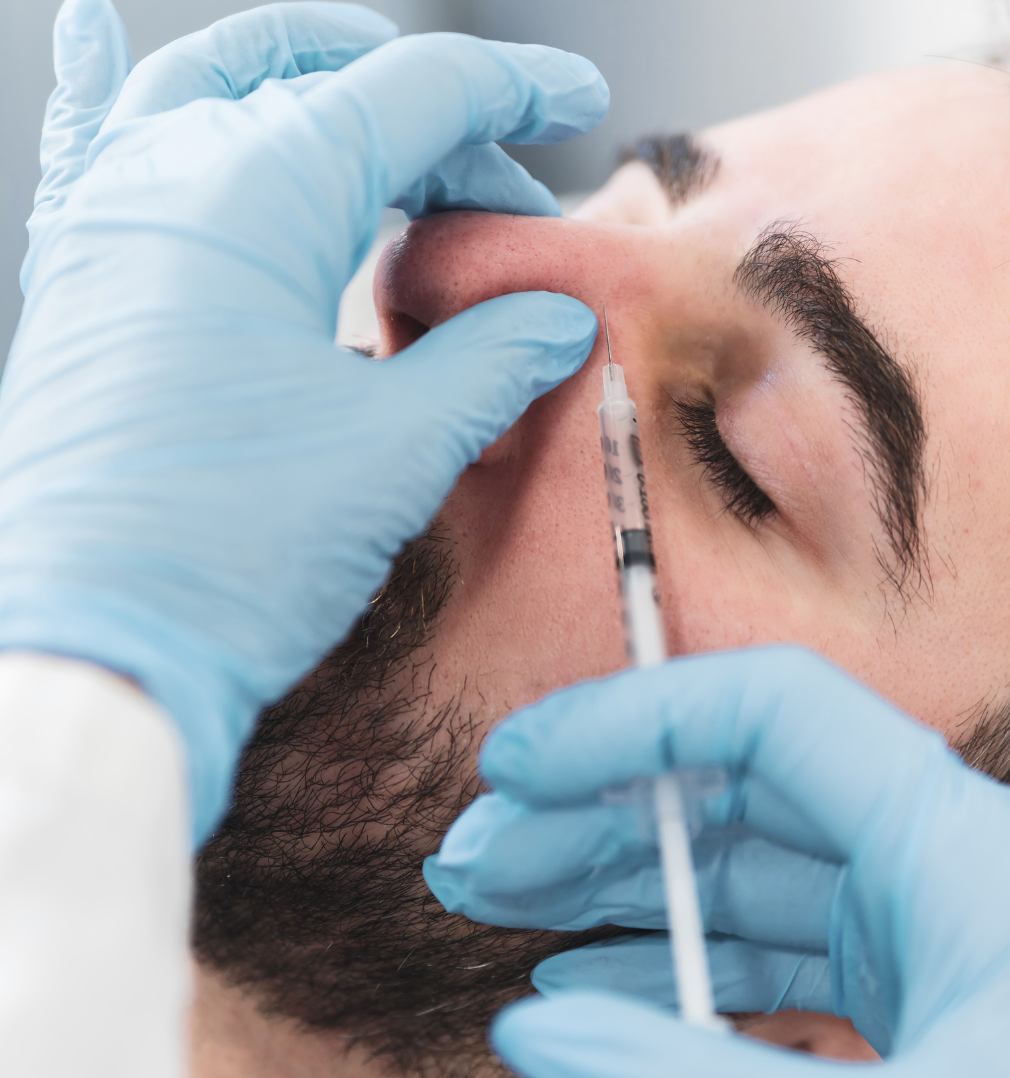Fillers
Facial fillers, also known as dermal fillers, are injectable substances used to add volume, alter the contours, and fill in wrinkles and lines in the face. They are commonly composed of Hyaluronic acid. These fillers can help smooth out nasolabial folds, enhance lips, restore volume to cheeks, and improve the overall facial symmetry. The effects are typically temporary, lasting from several months to a couple of years, depending on the type of filler used and the area treated.

Smoothing Wrinkles and Fine Lines
Fillers are often used to reduce the appearance of facial wrinkles, such as nasolabial folds (smile lines), marionette lines, and crow’s feet.

Enhancing Lips
Dermal fillers can add volume, shape, and definition to the lips, making them appear fuller and more contoured.

Cheek Augmentation
Fillers can restore lost volume in the cheeks, creating a more youthful and lifted appearance.

Jawline and Chin Contouring
Fillers can define and sculpt the jawline and chin, improving facial symmetry and profile.

Under-Eye Hollows
Fillers can reduce the appearance of dark circles and hollow areas under the eyes, giving a fresher, less tired look.

Nose Reshaping
Also known as non-surgical rhinoplasty, fillers can smooth out bumps, lift the tip, or correct asymmetries of the nose.

Hand Rejuvenation
Fillers can restore volume and smooth out the skin on the hands, reducing the appearance of veins and tendons. Beyond aesthetic improvements, fillers in the hands can help patients with significant volume loss due to medical conditions, improving functionality and appearance.

Scar Improvement
Fillers can be used to fill in and smooth out certain types of acne scars or other facial scars by filling in the depressed areas.

Facial Lipoatrophy
Fillers are used to treat facial lipoatrophy, a condition characterized by the loss of fat in the face.

Hemifacial Atrophy
This condition involves progressive facial wasting, and fillers can help restore symmetry and volume.
Frequently Asked Questions

